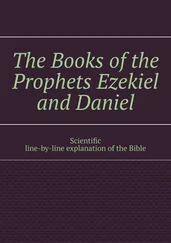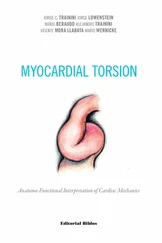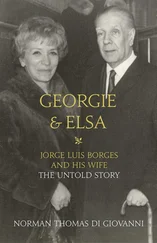Jorge C. Trainini - Fulcrum and Torsion of the Helical Myocardium
Здесь есть возможность читать онлайн «Jorge C. Trainini - Fulcrum and Torsion of the Helical Myocardium» — ознакомительный отрывок электронной книги совершенно бесплатно, а после прочтения отрывка купить полную версию. В некоторых случаях можно слушать аудио, скачать через торрент в формате fb2 и присутствует краткое содержание. Жанр: unrecognised, на английском языке. Описание произведения, (предисловие) а так же отзывы посетителей доступны на портале библиотеки ЛибКат.
- Название:Fulcrum and Torsion of the Helical Myocardium
- Автор:
- Жанр:
- Год:неизвестен
- ISBN:нет данных
- Рейтинг книги:5 / 5. Голосов: 1
-
Избранное:Добавить в избранное
- Отзывы:
-
Ваша оценка:
- 100
- 1
- 2
- 3
- 4
- 5
Fulcrum and Torsion of the Helical Myocardium: краткое содержание, описание и аннотация
Предлагаем к чтению аннотацию, описание, краткое содержание или предисловие (зависит от того, что написал сам автор книги «Fulcrum and Torsion of the Helical Myocardium»). Если вы не нашли необходимую информацию о книге — напишите в комментариях, мы постараемся отыскать её.
Fulcrum and Torsion of the Helical Myocardium — читать онлайн ознакомительный отрывок
Ниже представлен текст книги, разбитый по страницам. Система сохранения места последней прочитанной страницы, позволяет с удобством читать онлайн бесплатно книгу «Fulcrum and Torsion of the Helical Myocardium», без необходимости каждый раз заново искать на чём Вы остановились. Поставьте закладку, и сможете в любой момент перейти на страницу, на которой закончили чтение.
Интервал:
Закладка:
In this new book, Trainini and his team attempt a step forward and make a series of proposals that come to complete Torrent’s cardiac anatomy, physiology and mechanics. Reading this new investigation is a pleasure that demands continuous attention, so that our “neuronal boxes” do not rebel against the effort it means to sometimes destroy what we have firmly installed in them. Concentration in its reading to start linking the pieces of this puzzle, which at the end of the book shows to be simple, clear and demonstrative. The text should be read slowly, as it was never easy to tread in swamp-limited grounds and, as in the ascent to the summit of a difficult mountain, stop now and then to take a breath and enjoy the view as we get near the peak, where we will see the final landscape of the new vision. Then we will be conscious that the effort was worthwhile.
The book is arranged into four great sections or Propositions , outlining the contributions of Dr Trainini and collaborators, and linking them like the pieces of a puzzle to shape the final idea.
In the first place, Proposition I “Support and functional anatomy of the heart. The helical myocardium ” constitutes for me the fundamental part of this book. The anatomical and histological study of the myocardium defines a continuous, spiraling muscle, an integral piece that in order to fulfill its muscle function needs a supporting point, the cardiac fulcrum . The myocardium is inserted at its origin and end into this nucleus with tendinous, cartilaginous and even osseus structure, according to the specimen analyzed, located below and in front of the aorta. Although this “os cordis” had been mentioned in veterinary studies, this is the first description not only of its presence in the human heart, but what is more relevant, by assigning it a physiological function that means an important change in the understanding of the anatomo-physiology of Torrent, justifies in itself the creation of this book. A cardiac fulcrum , a supporting point, a meeting point between the ascending segment and the right segment of this cardiac muscle, which are the origin and end of the myocardial structure. The importance of this idea is to supplement that of master Torrent, who considered that the myocardium did not have a supporting point as adopted by other muscular systems for their contraction and force function. In this first Proposition , splendidly documented, there is also an important contribution regarding the friction generated between the muscle layers in the mechanism of cardiac contraction. This friction produced by the opposing motion of the ascending and descending segments, as well as of the latter segment against the septal area of the myocardial band, demands a lubricating antifriction system that the author places in the lacunar structures between the muscle bundles, together with the Thebesian and Langer venous conduits. Thus, the discovery of intramyocardial hyaluronic acid as a “lubricating oil” is reached. Without this new antifriction mechanism, myocardial contraction would be impossible due to great energy dissipation.
Personally, I think that this first Proposition is the real Gordian knot of the scientific proposal and the progress in the puzzle of cardiac functioning postulated by Trainini, a continuous muscle that needs a supporting point and an antifriction mechanism: a revolutionary conceptual triad.
Secondly, in Proposition II , “ Research on cardiac electrical propagation”, the authors analyze the left ventricular endocardial and epicardial electrical activation sequence with three-dimensional electroanatomical mapping using a Carto navigation and mapping system, which allows a three-dimensional anatomical representation with electrical activation and propagation maps. Myocardial stimuli diffusion has a pattern that corresponds to the topographic arrangement of muscle bundles, the direction of their muscle fibers and the motion mechanism that allows a correlation with electrical propagation and the corresponding function.
In Proposition III , “ Helical cardiodynamics. Suction pump ”, the authors focus in the physiology and understanding of the suction mechanism that is explained by master Torrent’s proposal about the persistent contraction of the ascending segment during the onset of the active protodiastolic phase. The authors describe a series of personal studies and investigations which define and clarify the three-stage cardiac mechanics with the concept of the scientifically-based suction phase, an active process that the authors explain as never before, integrating hydraulics and physics, disciplines not usually adequately incorporated to evaluate cardiac mechanics and the definition of mechanical suction pump.
The authors insist on a fundamental topic, as the importance of understanding that this active suction mechanism and its integrity with systole/diastole mechanics can be the basis to approach new surgical techniques and therapeutic options.
The last part of the book is Proposition IV , “ Contributions of Echocardiography and Cardiac Magnetic Resonance to the study of the helical heart”. Undoubtedly, the fast changes produced in cardiac imaging techniques will allow their use to understand the myocardial three-dimensional structure and its coupling with the new physiological concepts of cardiac mechanics. Deformation studies using speckle-tracking as a support of anatomical arrangement, the increasing incorporation of new techniques to the medical practice, though still with doubts about their operation, such as feature-tracking and fast SENC, and the use of cardiac magnetic resonance by diffusion tensor with tractography analysis of cardiac fibers, constitute a clear progress to understand heart motions and its pathology.
All these tools, and to my understanding mainly the analysis of myocardial torsion-detorsion deformation, are provided as a scientific support of the “new cardiac mechanics” to visualize, complement and verify with another more dynamic approach, the innovative interpretation changes proposed and unraveled along the Propositions of this text.
Have no doubt, you are again before a different book, unusual in its presentation and the manner of implementing the information collected through the investigation. We are facing a unique text, different, provocative. It is a creation that will demand a hundred percent of your attention, to sort out the new pathways that open before our eyes with original investigations and proposals in the limits of the unknown. Its reading will leave nobody indifferent and that is something that few books can achieve.
Do not precipitate, sit down with an open mind, enter the maze and enjoy a new world of cardiac mechanics and physiology vision.
Madrid, January 2022.
Preface
We leave the stillness of the shore to enter the whirlwind of the river of knowledge. We join in the efforts of those who during four centuries have longed to see beyond the established structure and function of the heart. Some have passed through those waters many years ago; others more recently, but certainly all remained in the uncertainty. The old dogma of the heart that “closes and opens like a fist” endured without allowing fissures. We belonged to another era. As we arrived later, we had other tools, but above all we had the religious faith of science, the doubts of the skeptic, the tenacity of the needy and the strength to find out where that flood that had carried away the old ideas on the structure and organization of the heart was heading.
We met from different places guided by the strange ritual that science has, that of going from mystery to understanding, which is never total or infallible, but which leaves knowledge clearer and more possible. Open to certainty and imagination, to a new level of abstraction. We entered the hypothesis of “Fulcrum and Helical Myocardial Torsion”, some of us earlier, others later. It was not mere chance. It was the need to complete the knowledge from all the necessary angles. We tried to advance in worldwide communion with all who accepted the challenge. This ambition never ceased. The first entry into its waters seemed reckless. Parked in that endless stream of Heraclitus river, we did not allow ourselves to be overwhelmed by the persistence of its waters or by despair. We were afraid of not facing the challenge of understanding how it was structured and what were the motions of that organ that three weeks after conception begins its endless heart beat until returning the being to mystery. Investigations and years followed. We always appealed to effort; science does not conceive primeval ideas without boldness. It must be submitted to tests of loyalty and honesty, of falsifiability. The scientist who cheats commits suicide. Impulses followed, then communications to the centers of knowledge. We often returned to the review, the step forward and the doubts. We have wept too many times. Nature does not reveal its intelligibility spontaneously. At first it seems complex, but it becomes simple by its logic, as long as soul and time devote to it. Thus, knowledge evolves.
Читать дальшеИнтервал:
Закладка:
Похожие книги на «Fulcrum and Torsion of the Helical Myocardium»
Представляем Вашему вниманию похожие книги на «Fulcrum and Torsion of the Helical Myocardium» списком для выбора. Мы отобрали схожую по названию и смыслу литературу в надежде предоставить читателям больше вариантов отыскать новые, интересные, ещё непрочитанные произведения.
Обсуждение, отзывы о книге «Fulcrum and Torsion of the Helical Myocardium» и просто собственные мнения читателей. Оставьте ваши комментарии, напишите, что Вы думаете о произведении, его смысле или главных героях. Укажите что конкретно понравилось, а что нет, и почему Вы так считаете.












